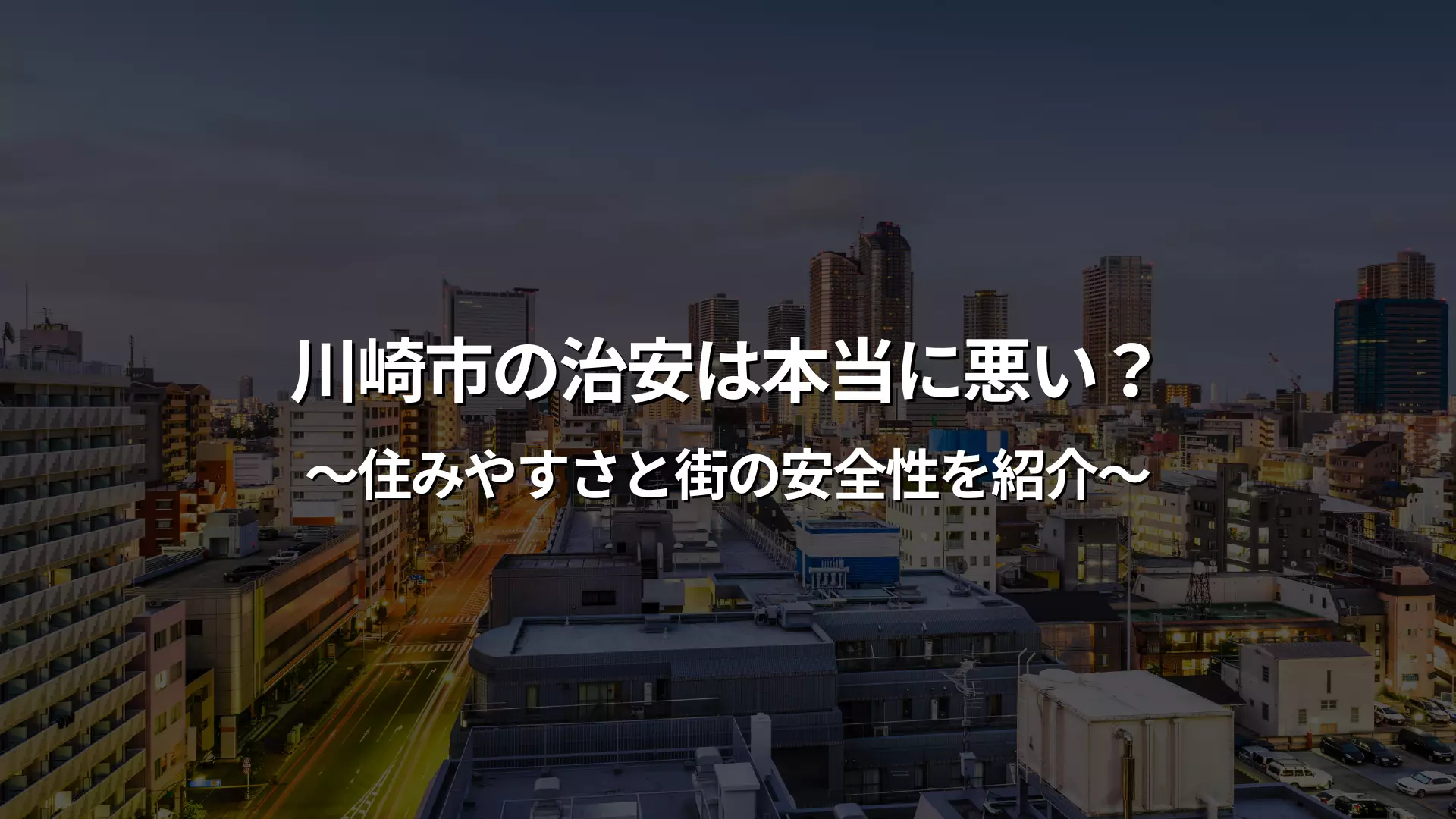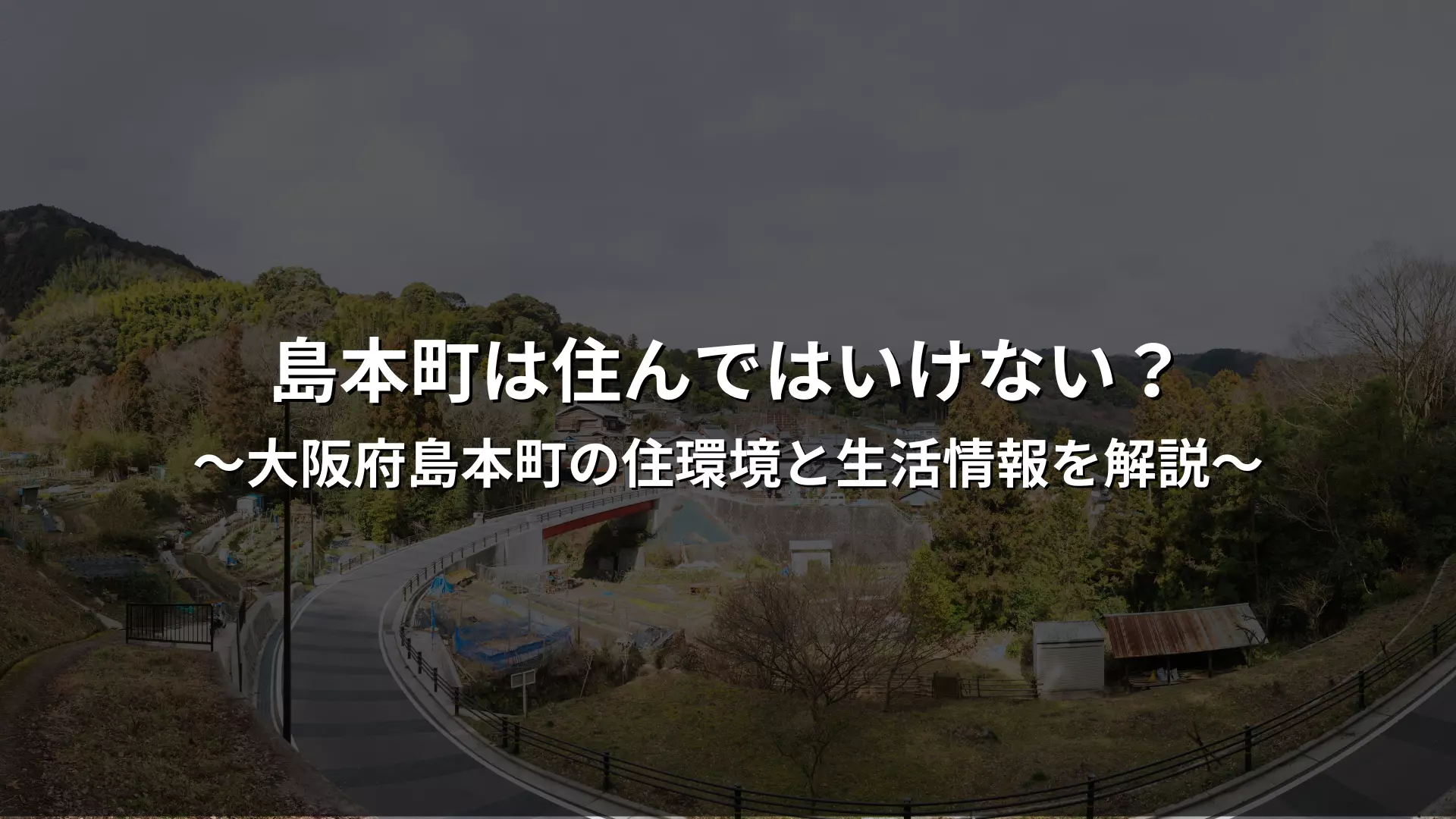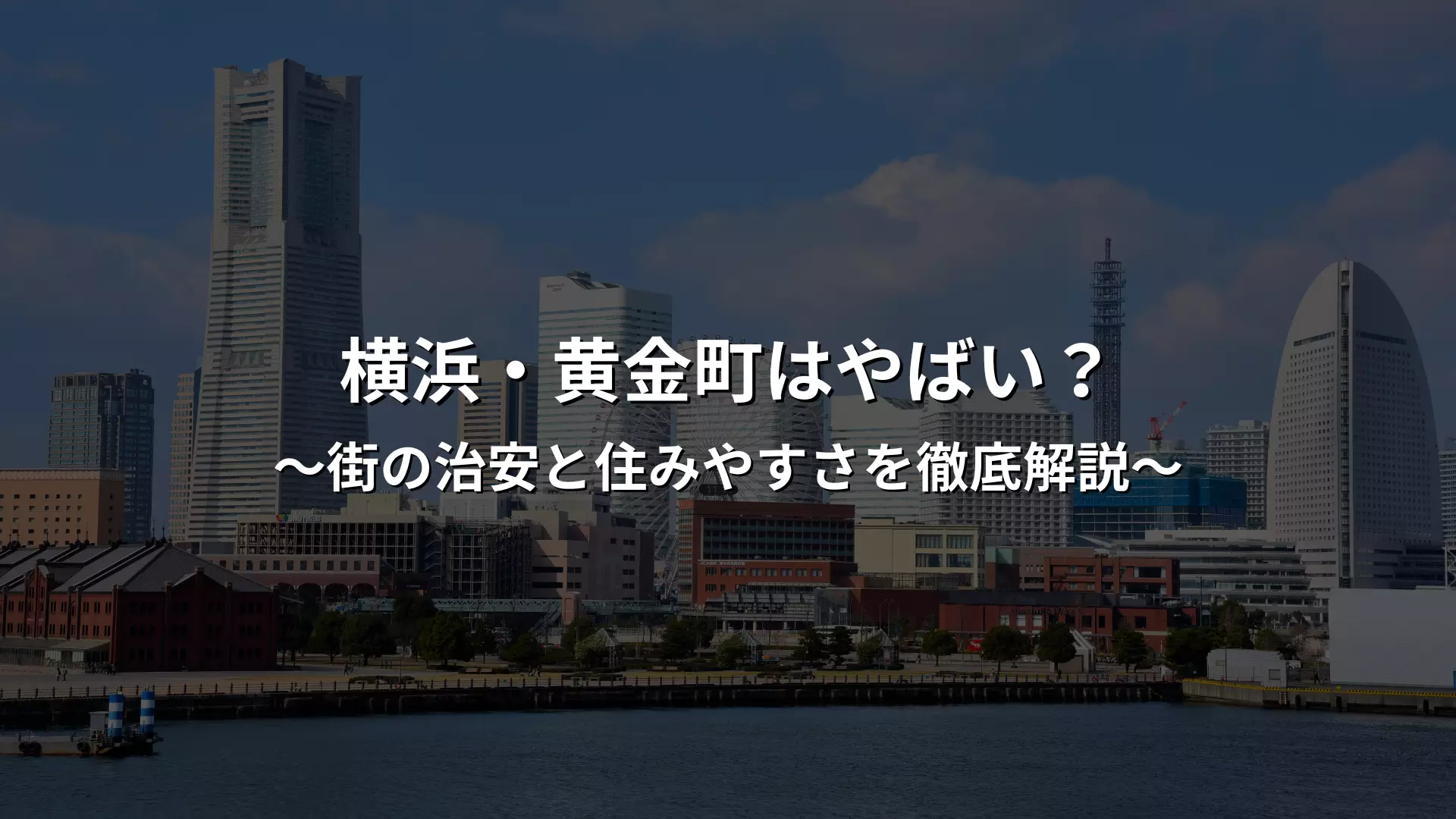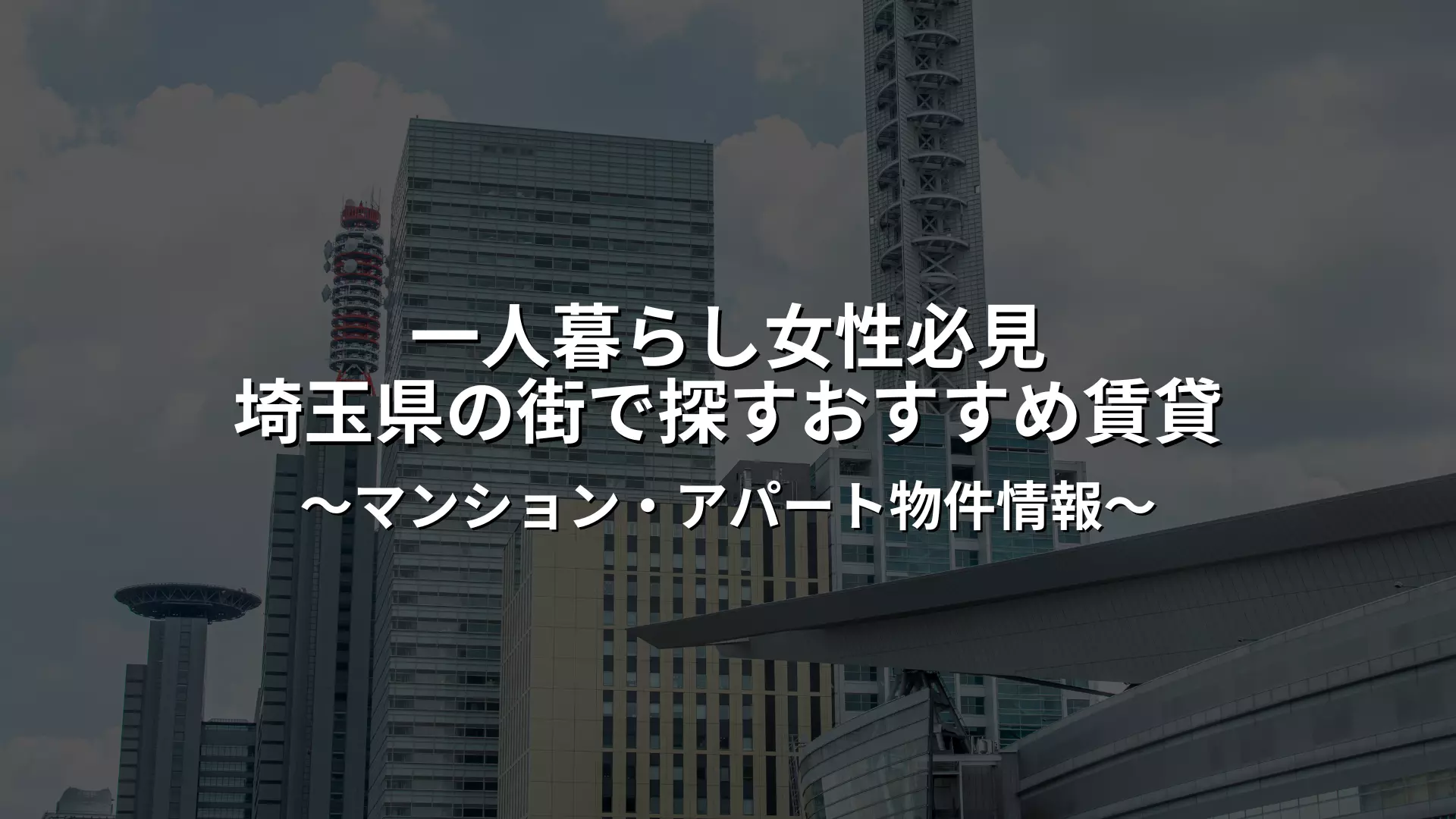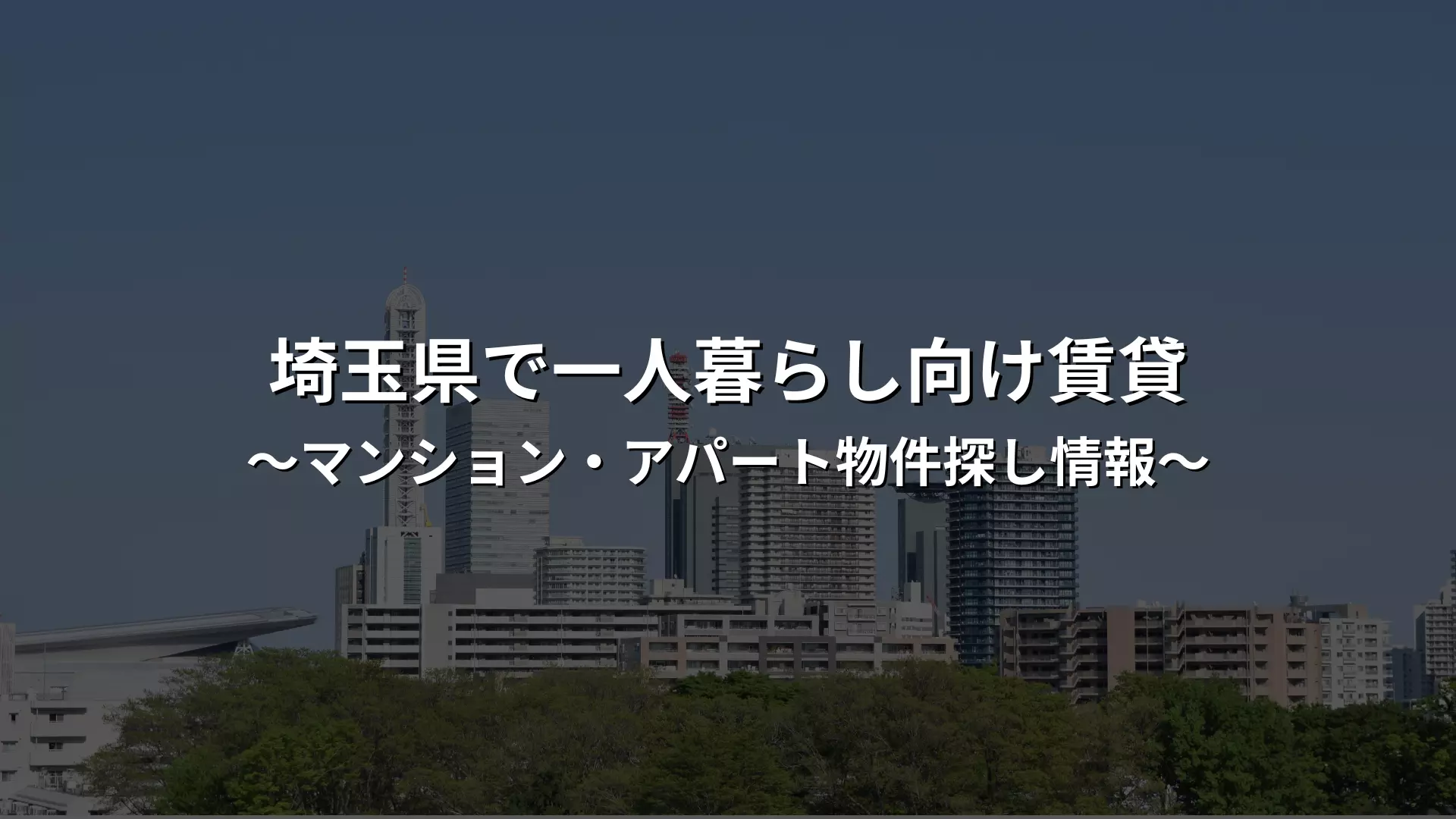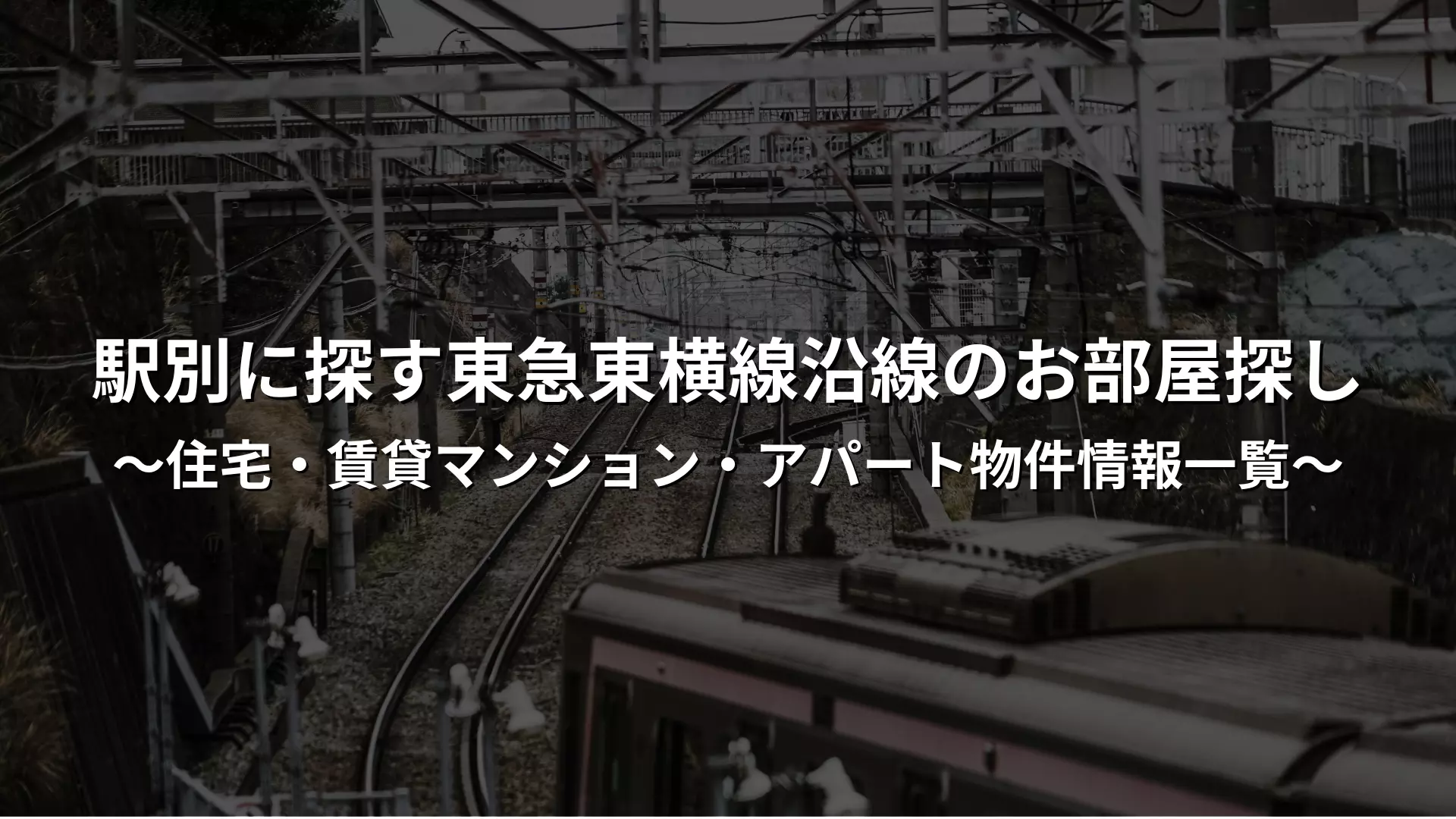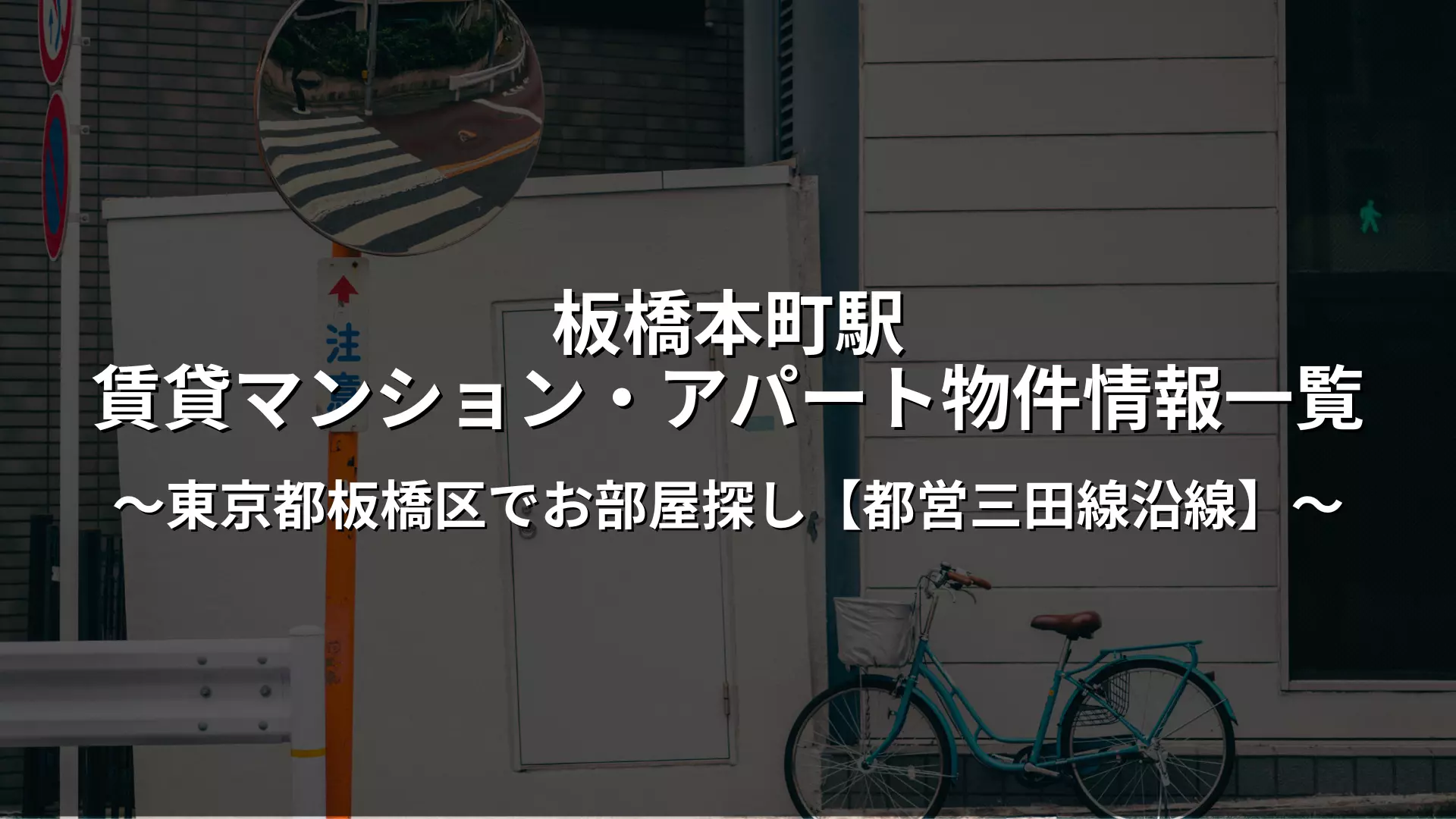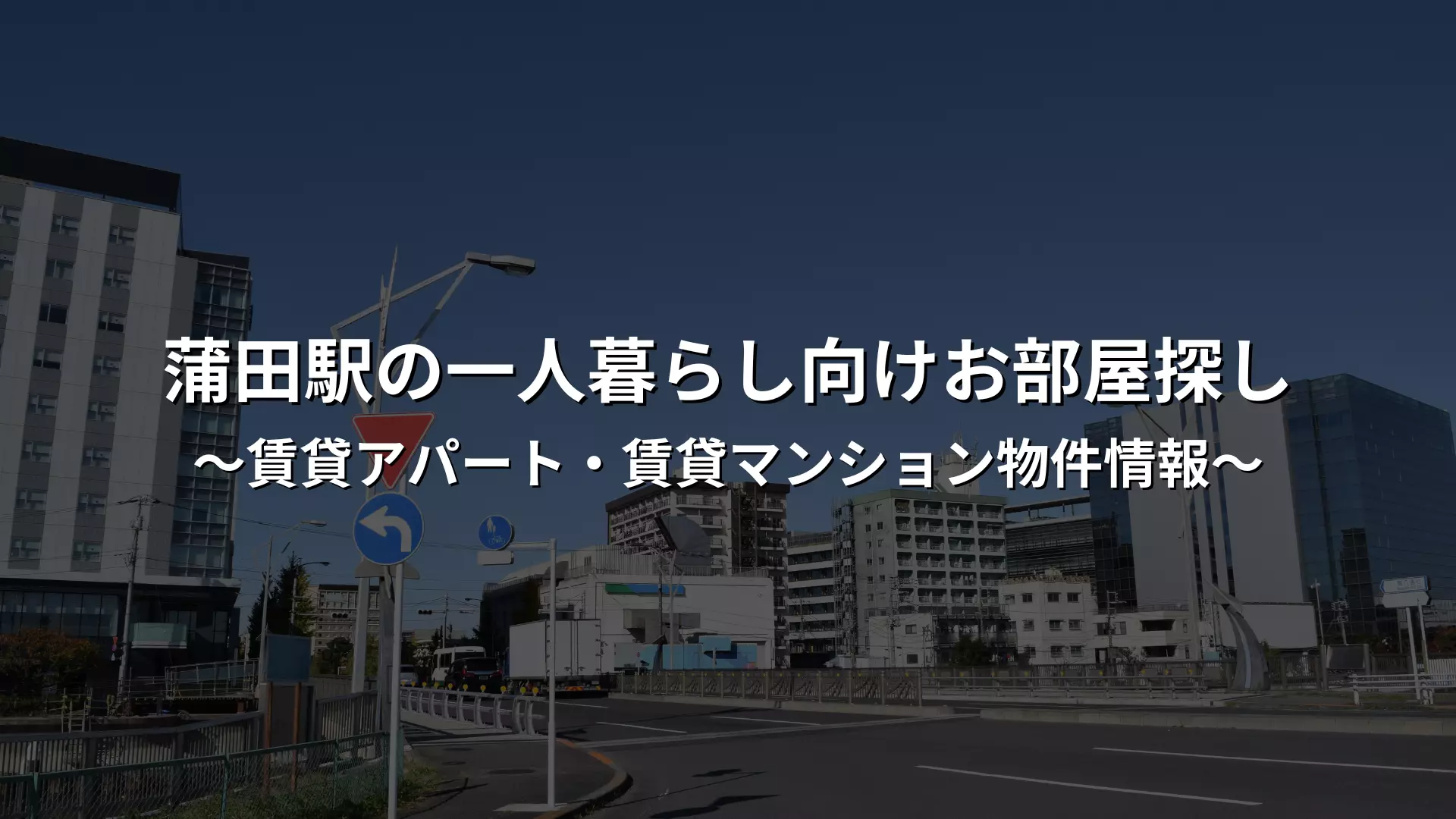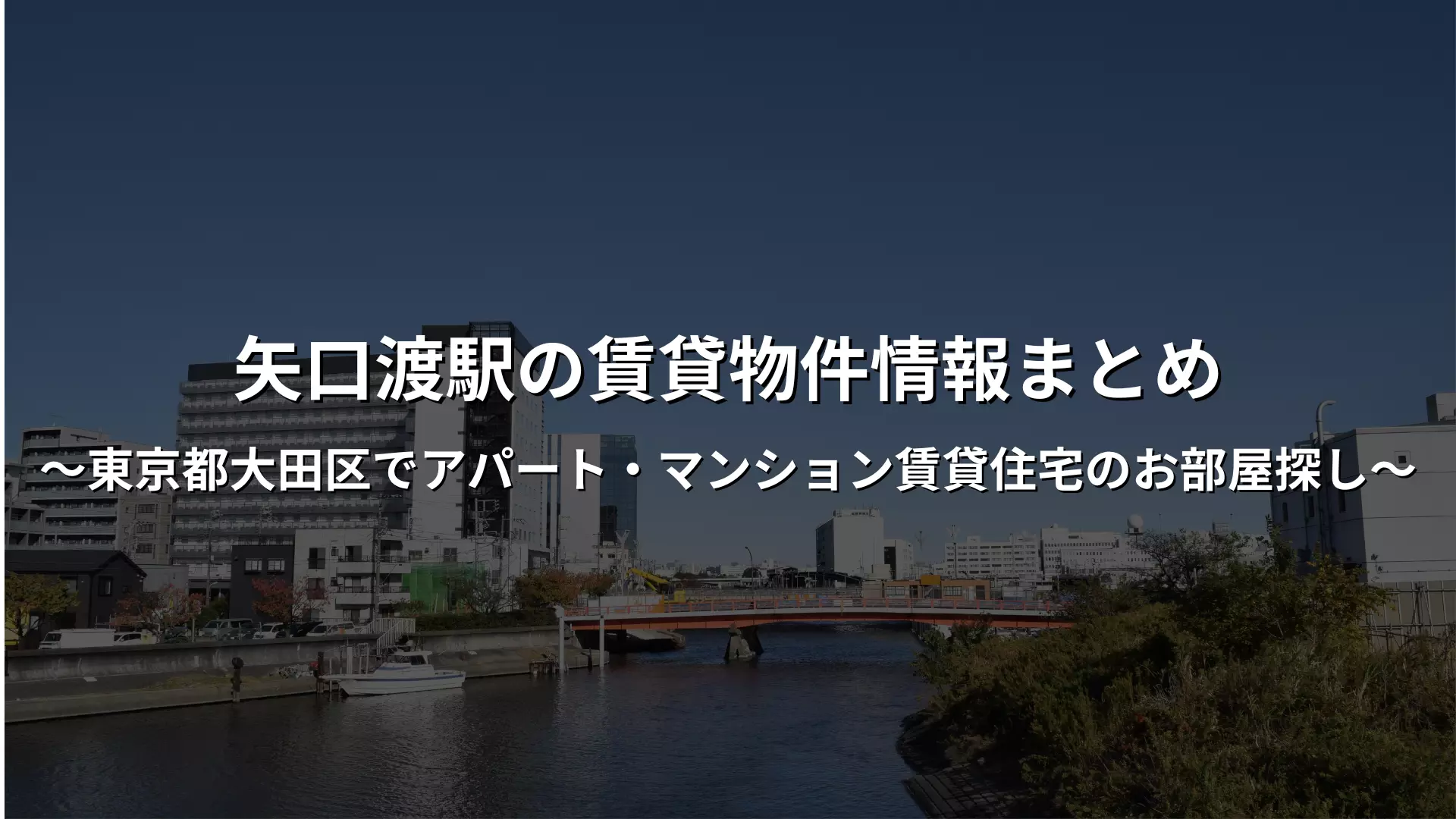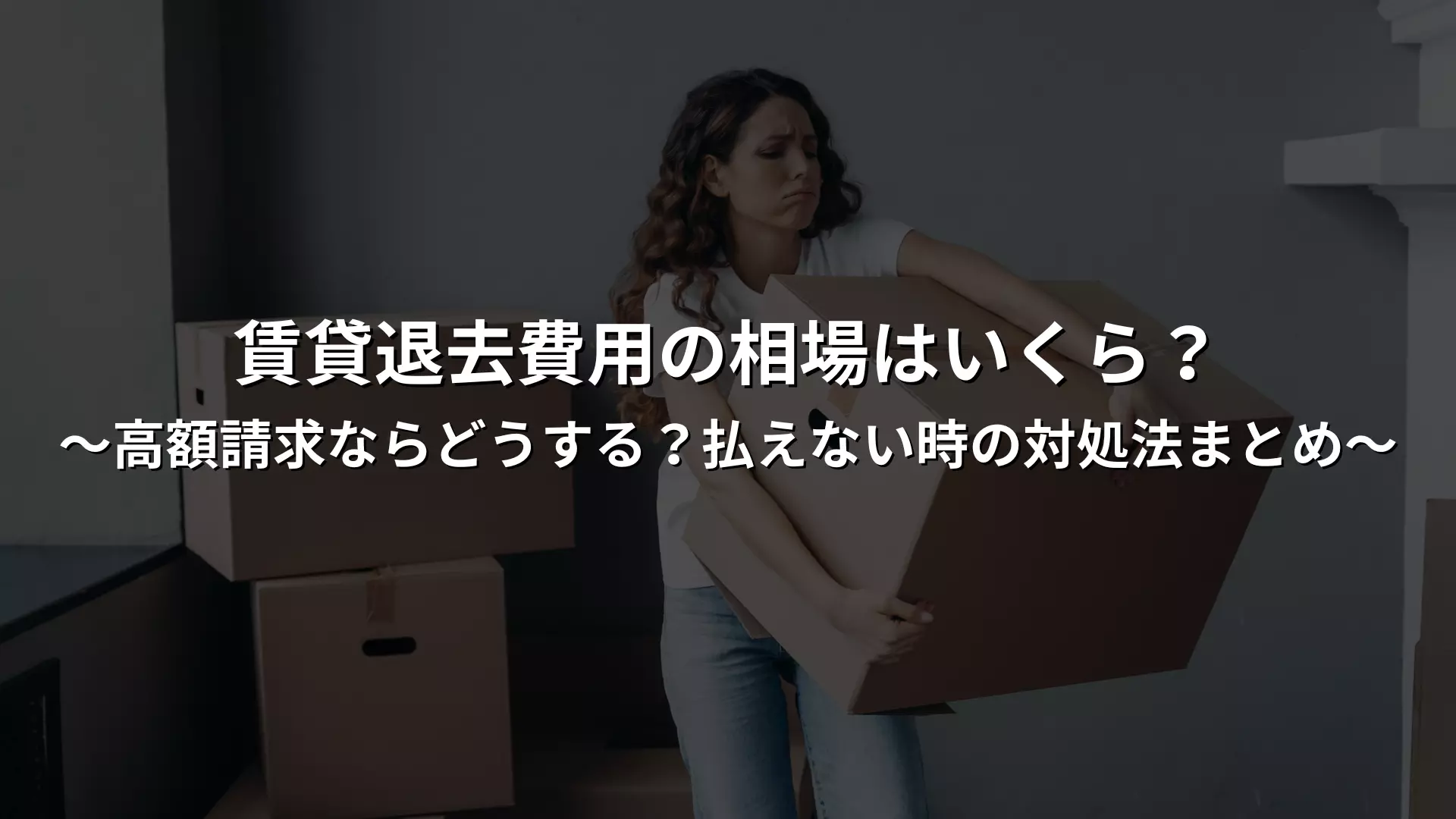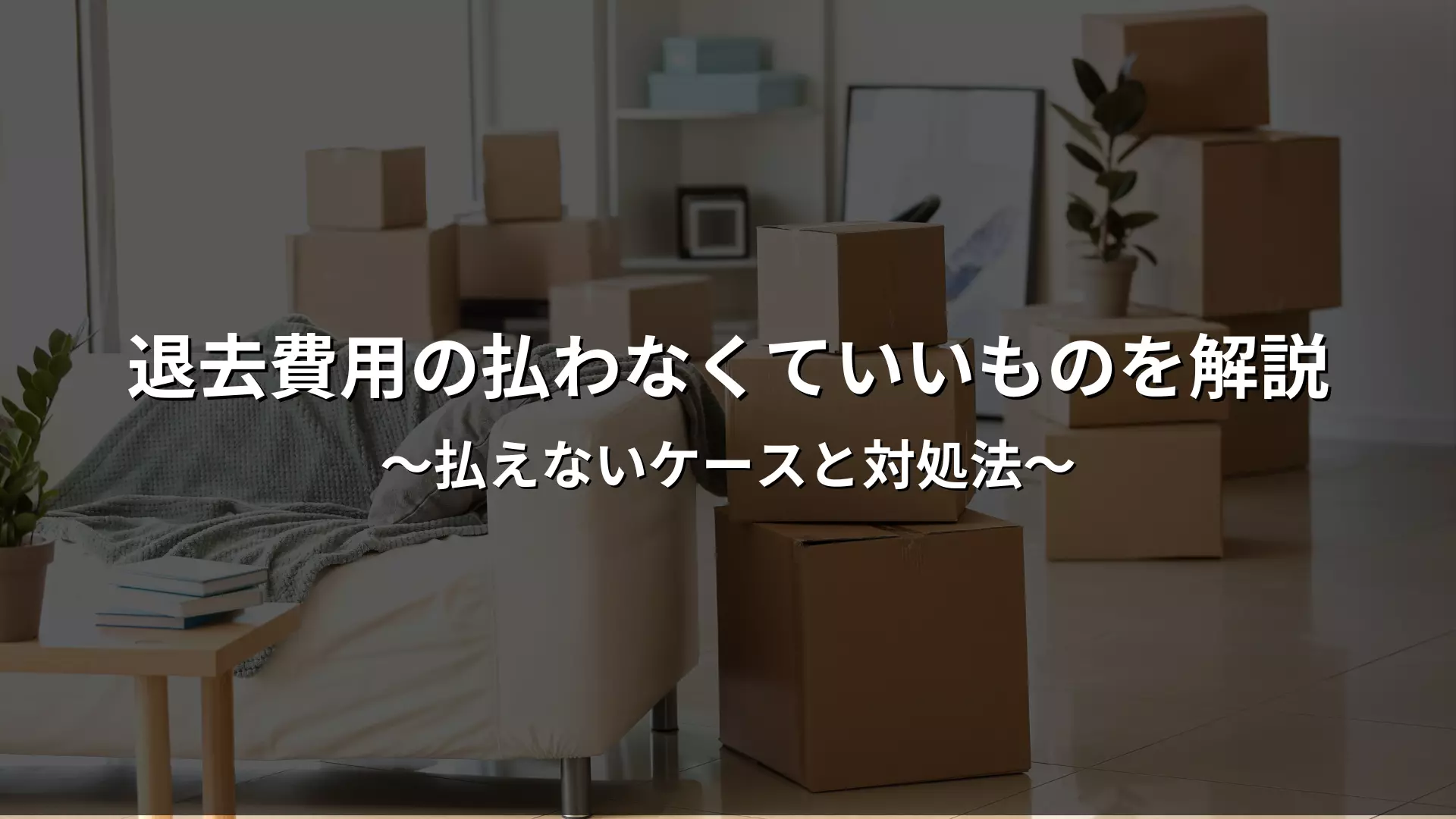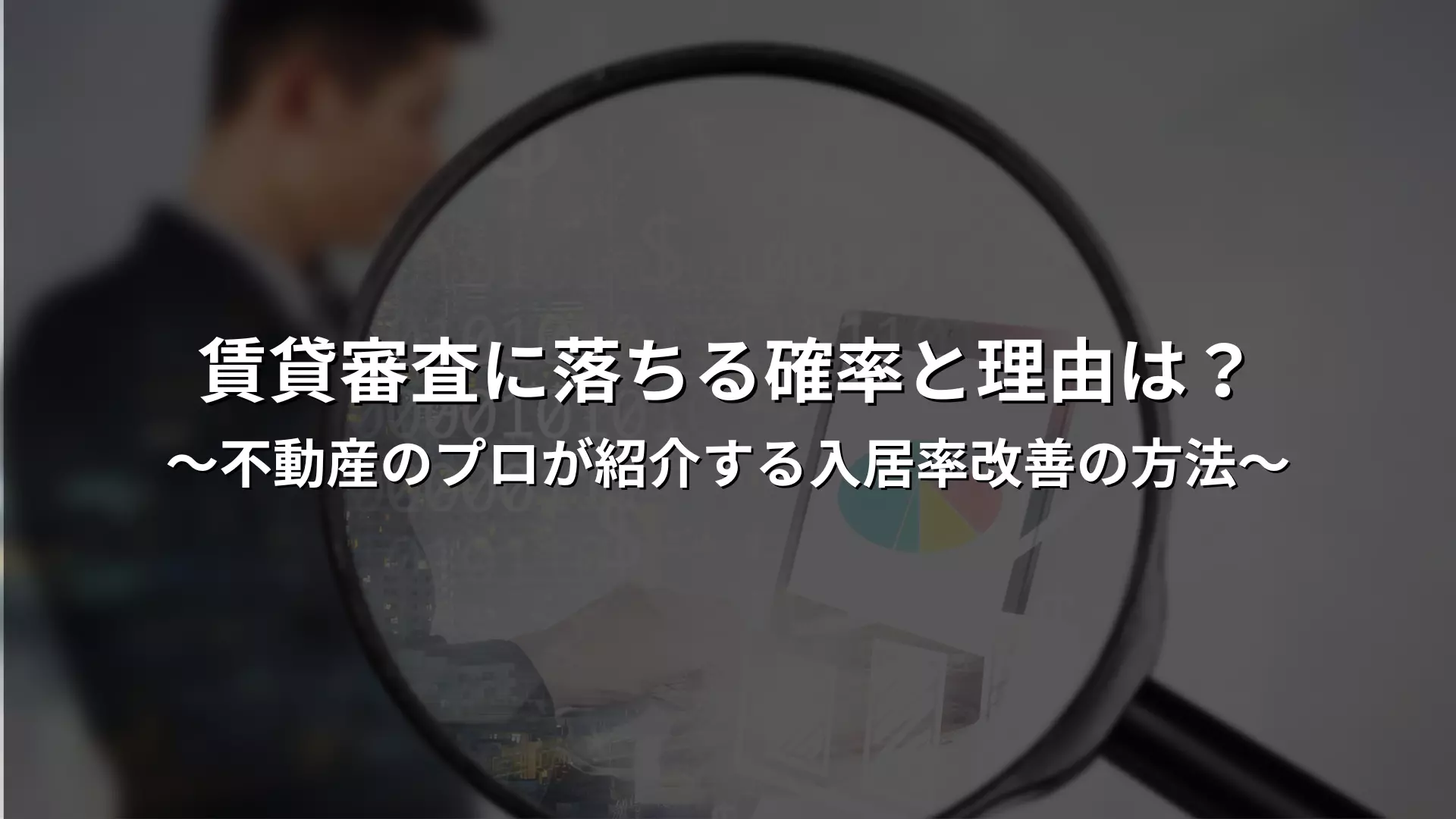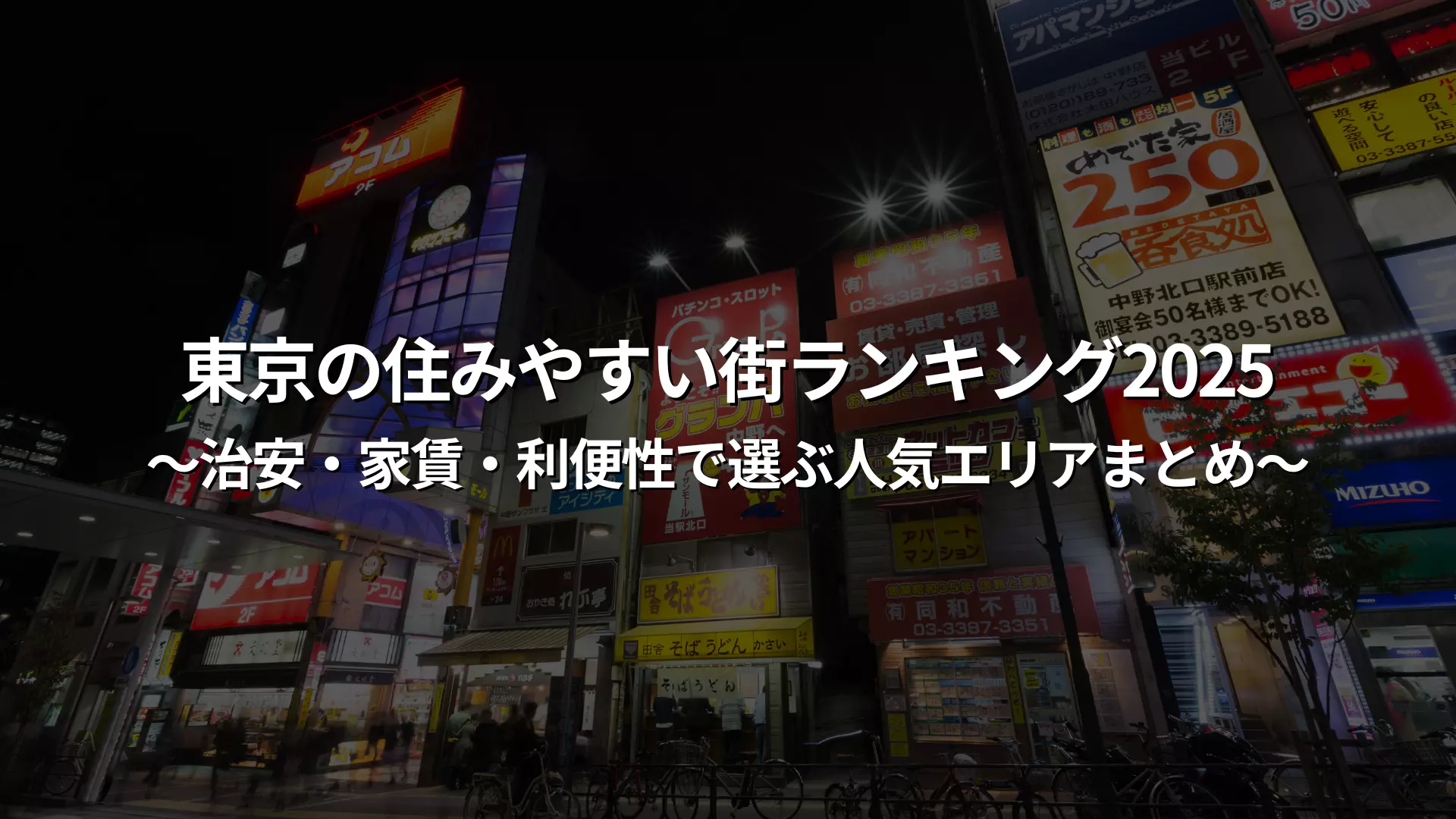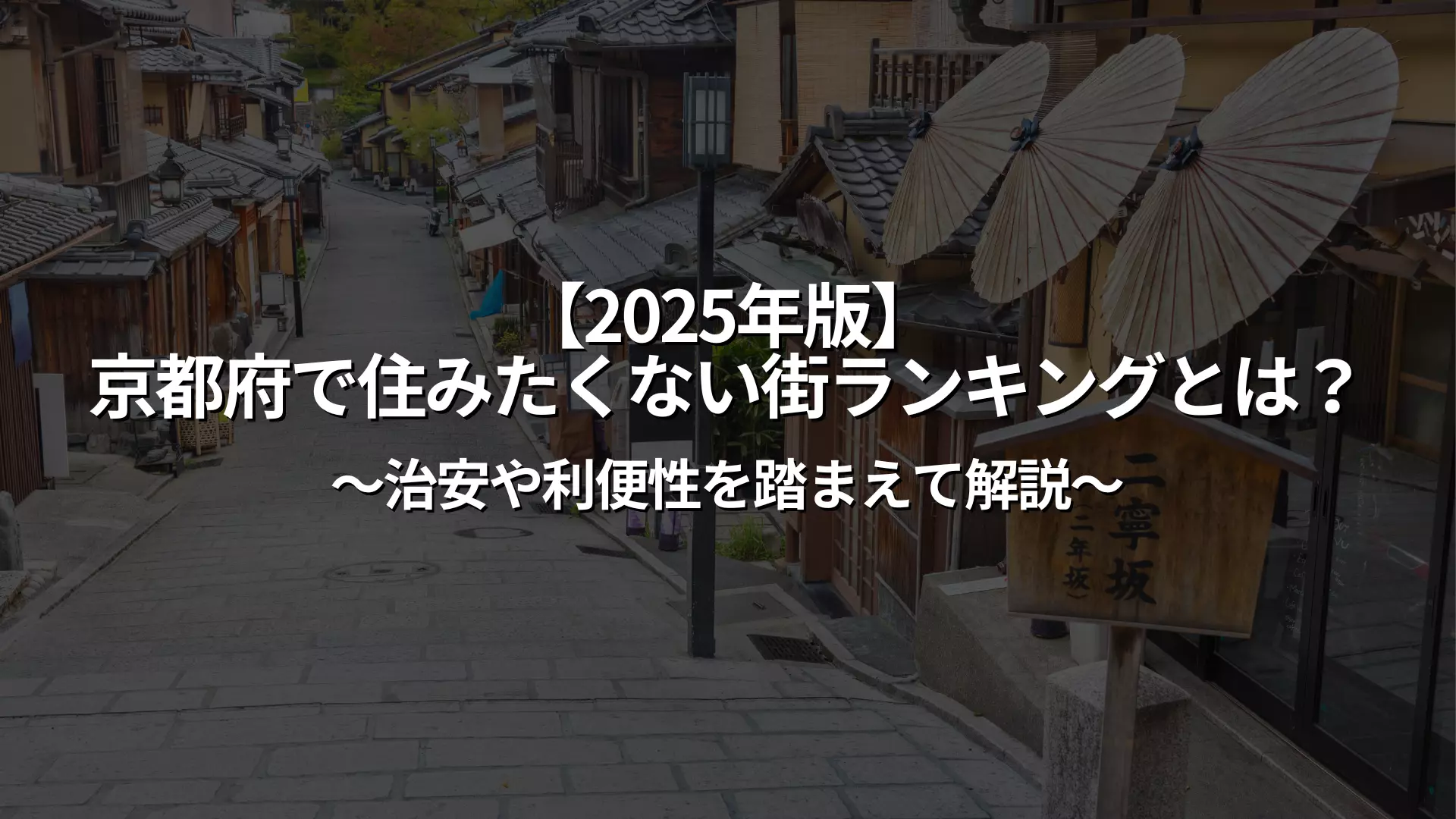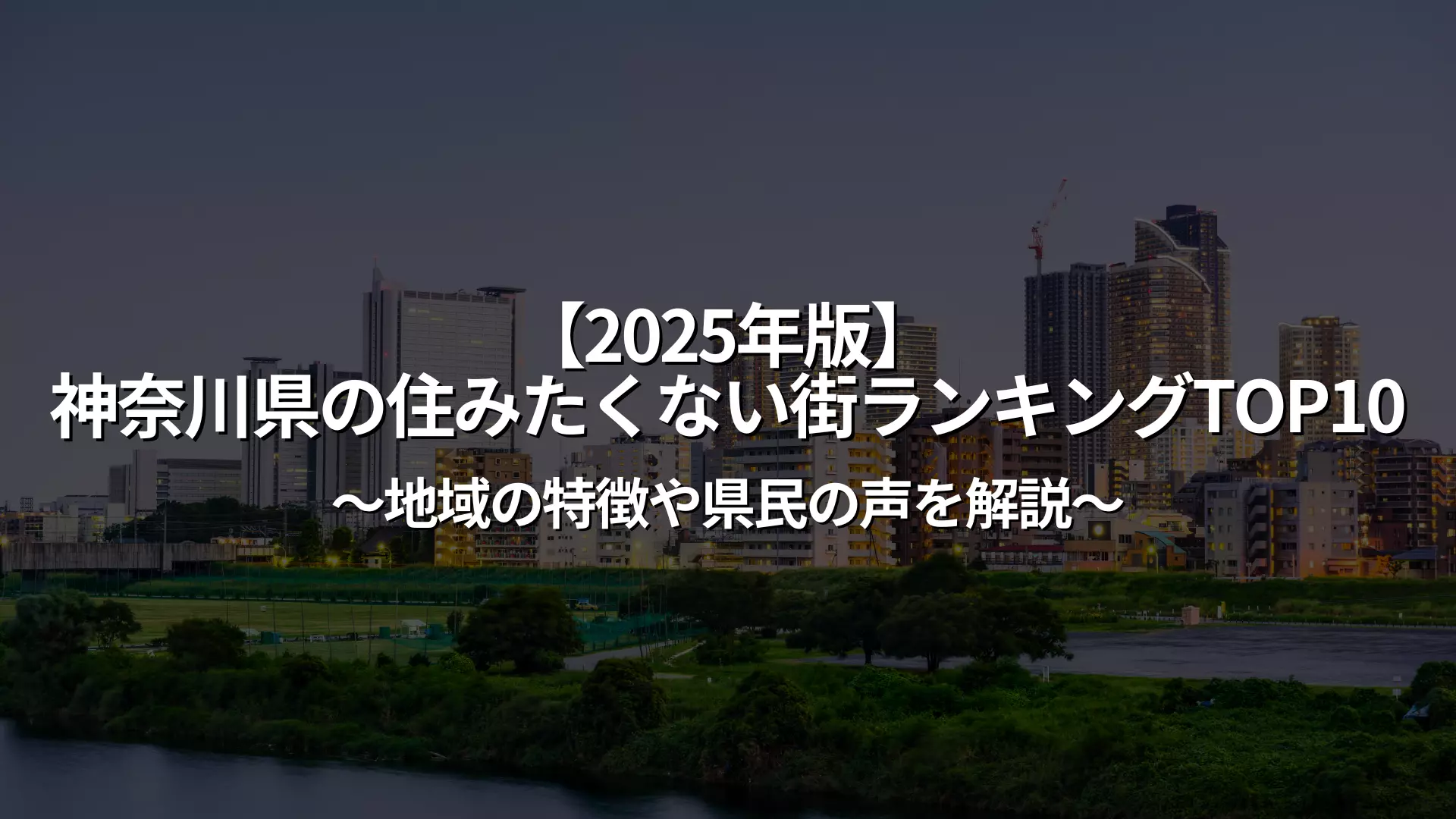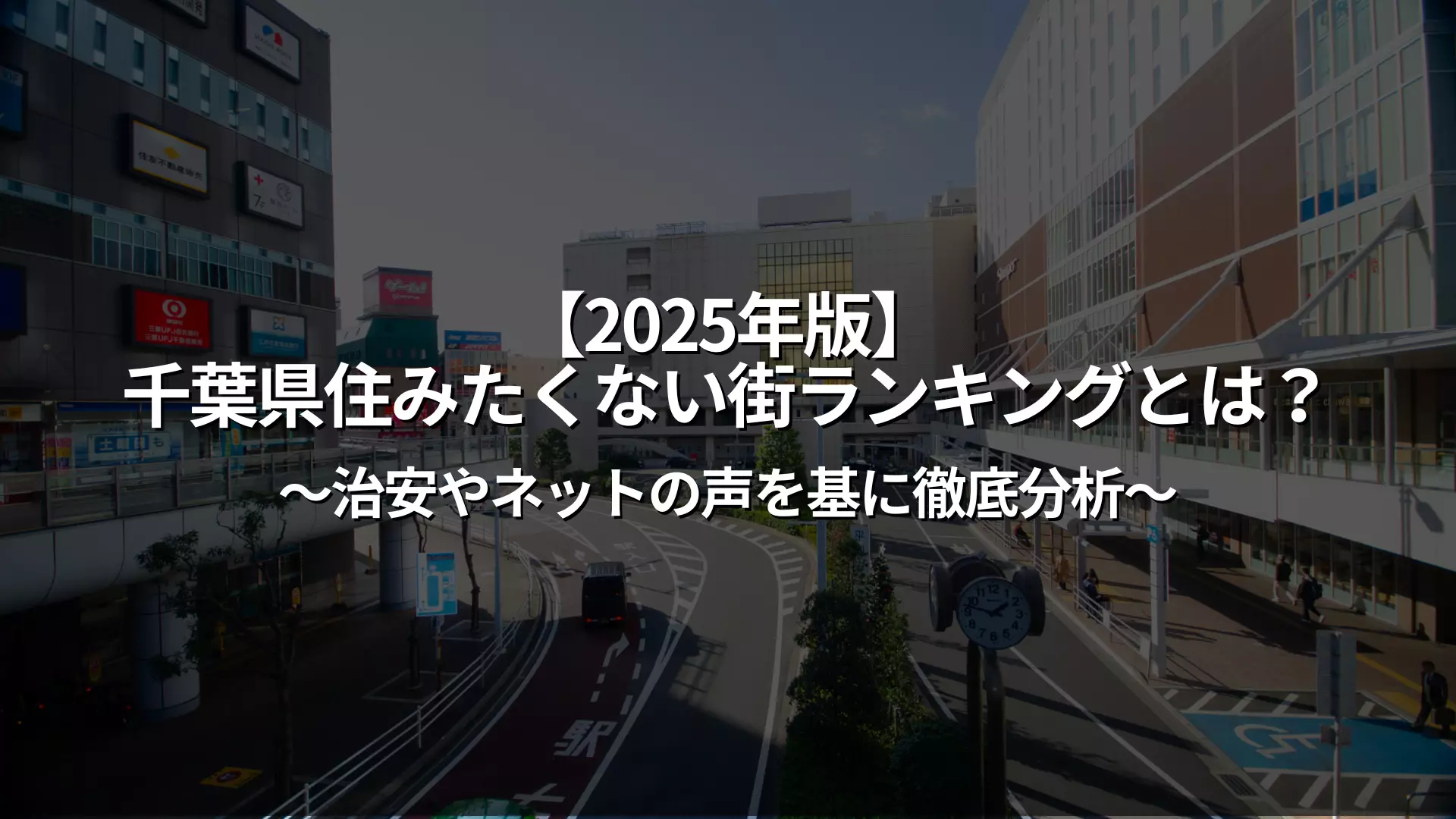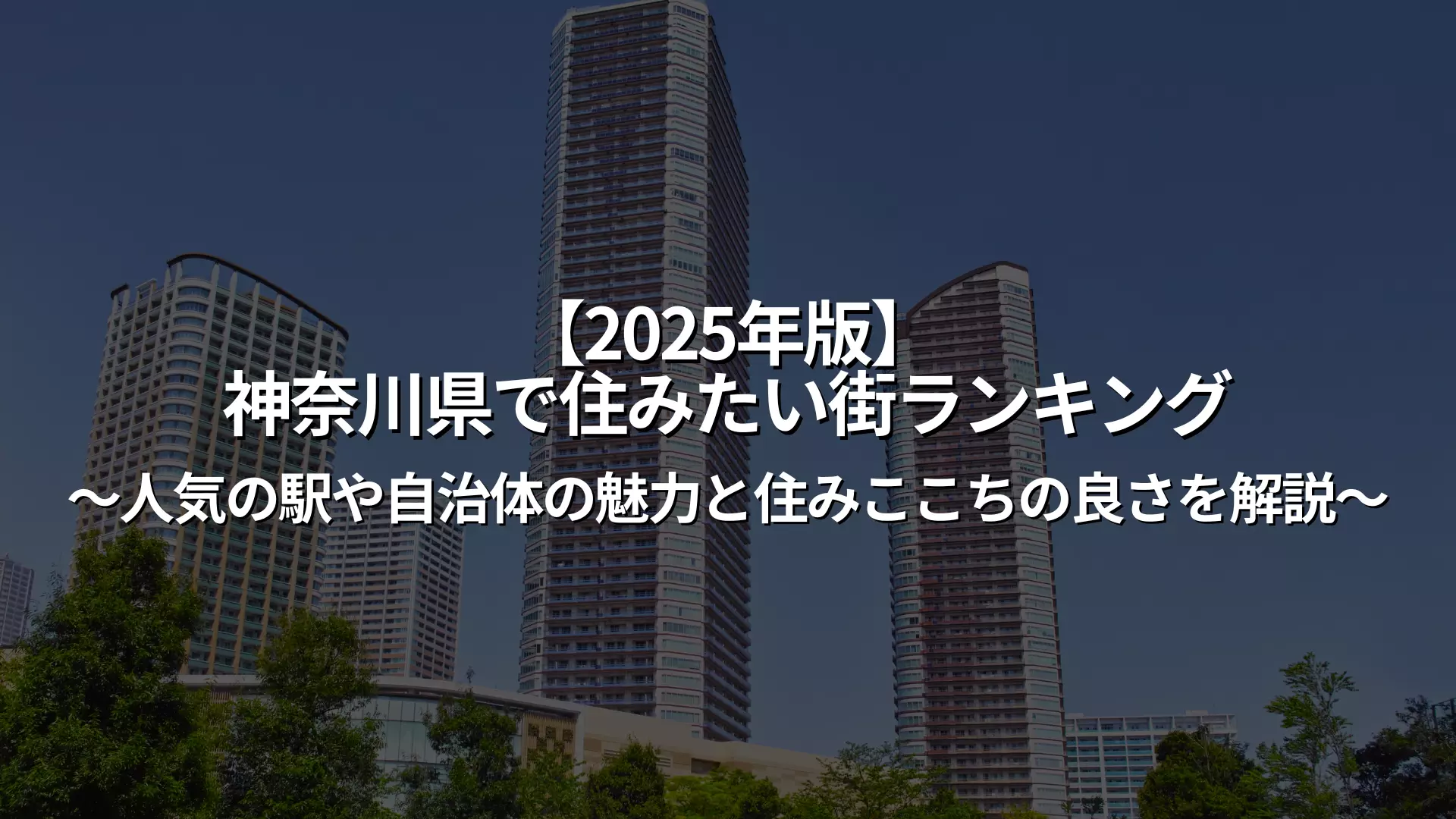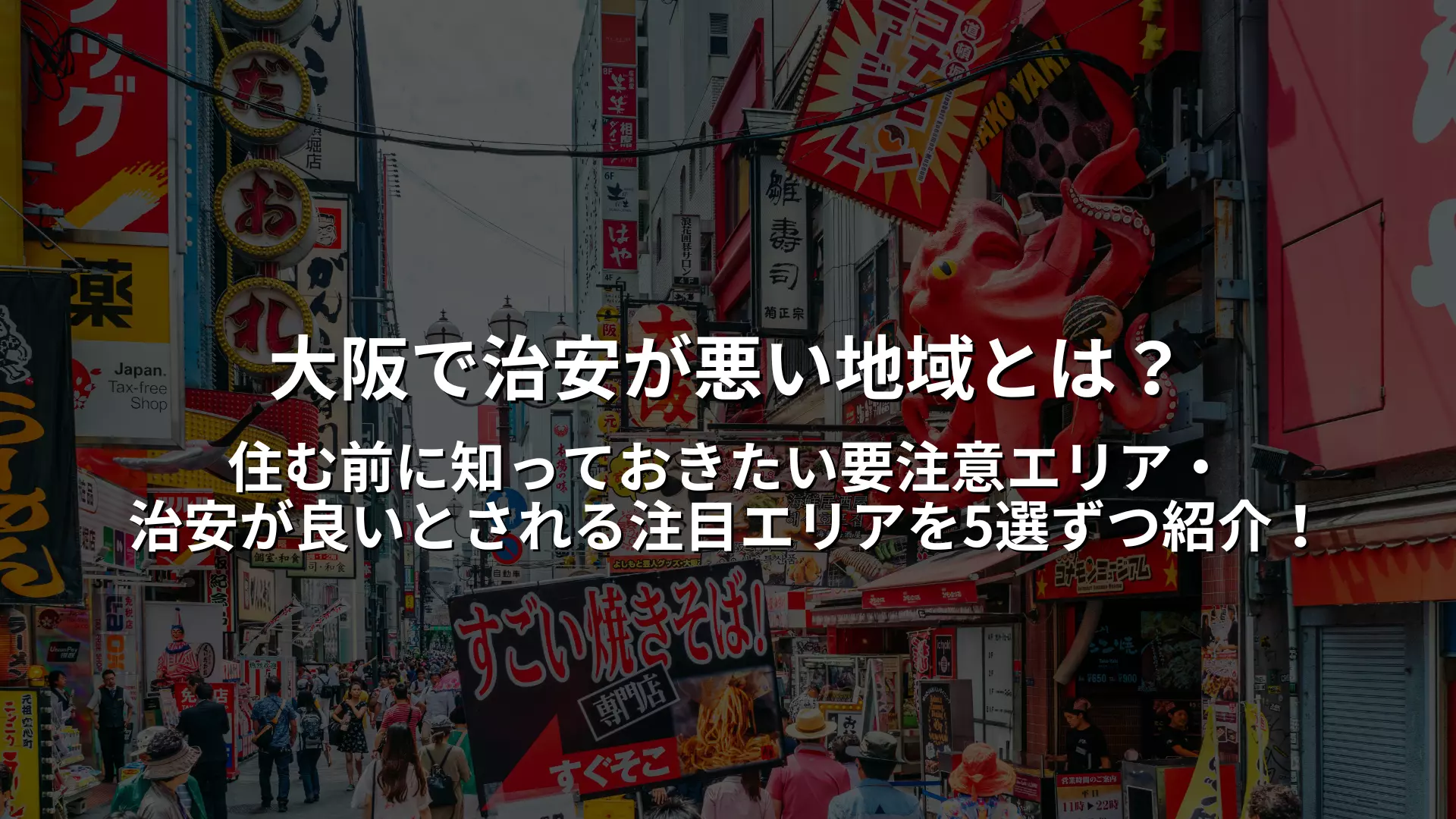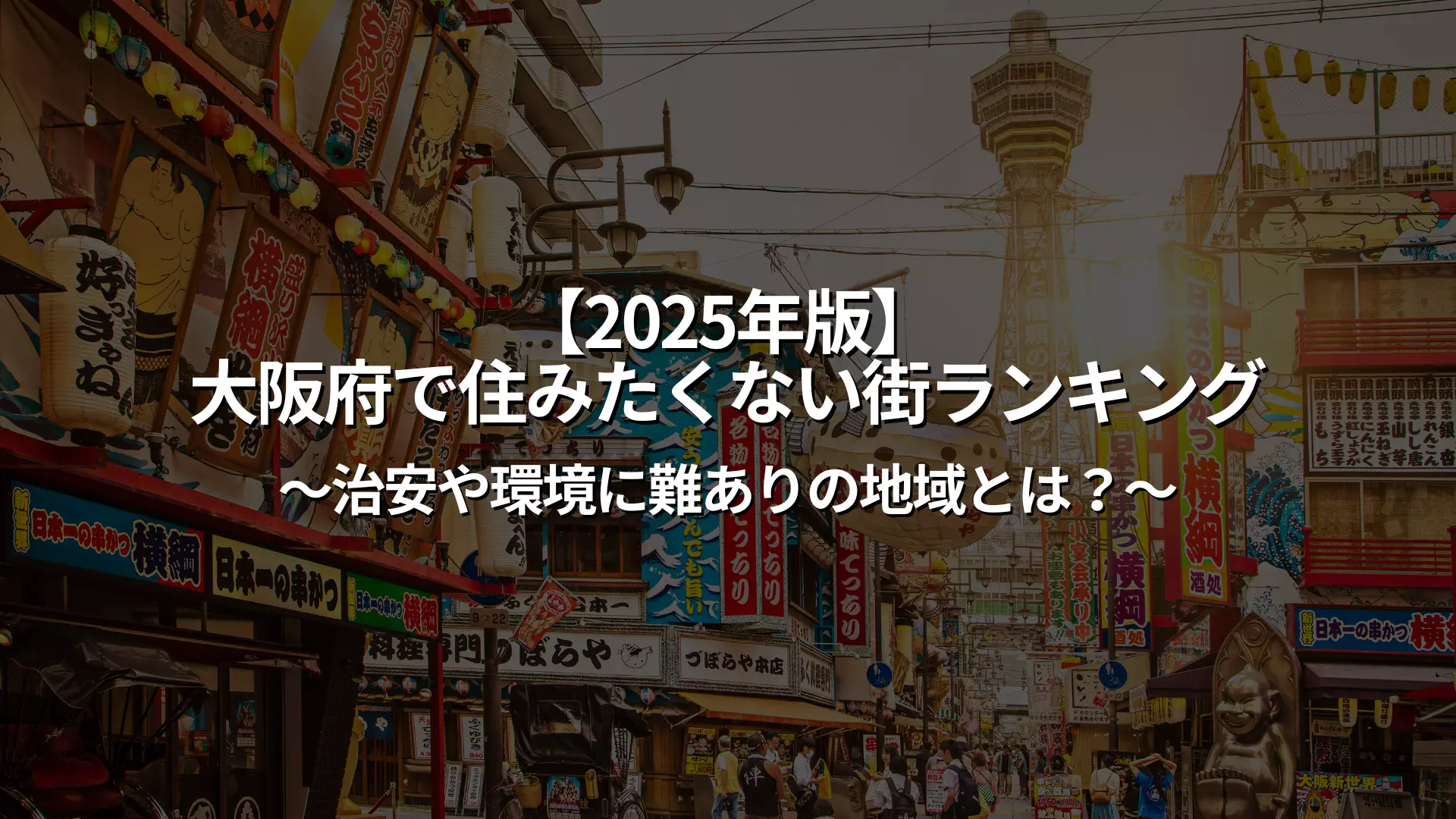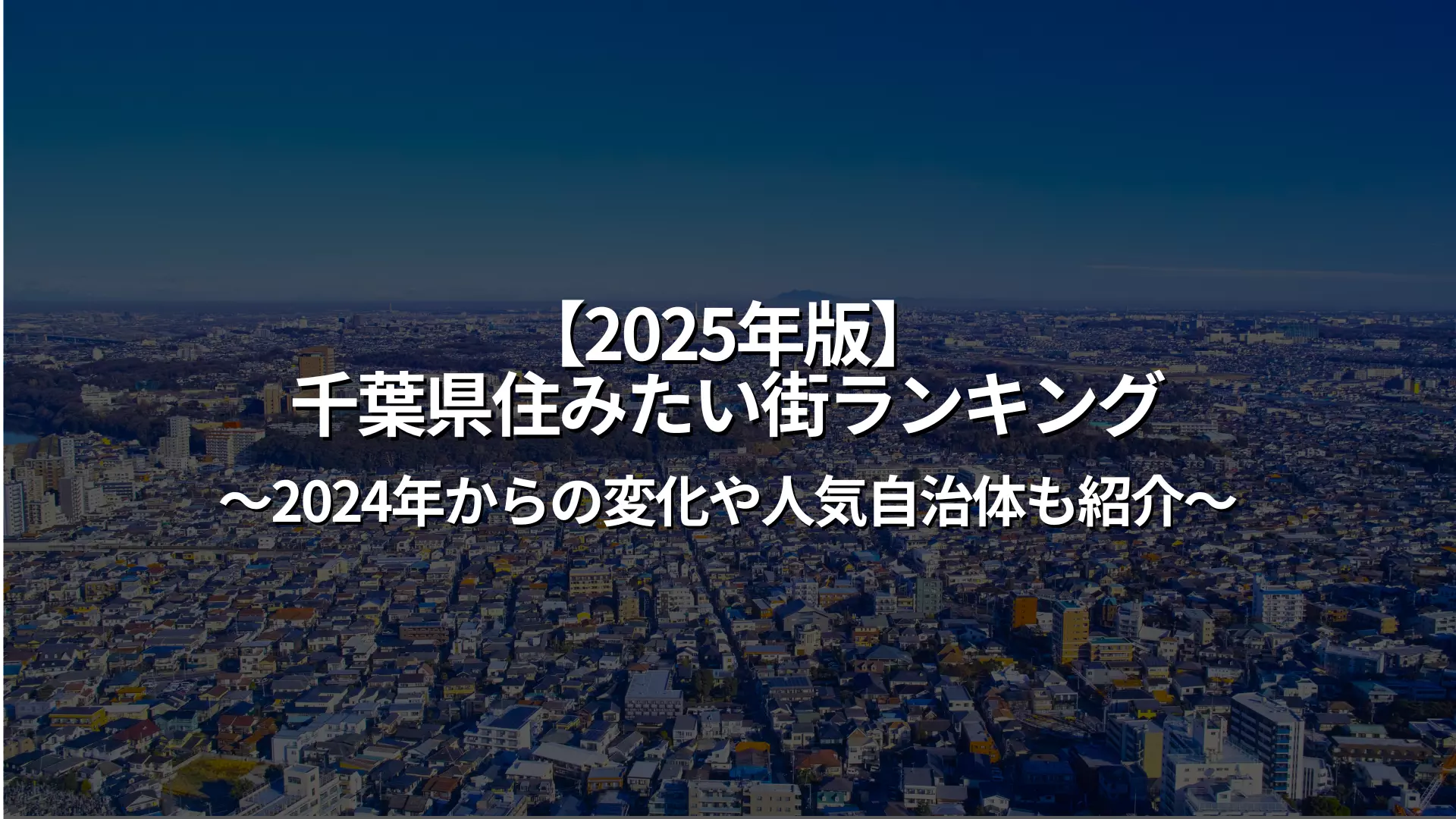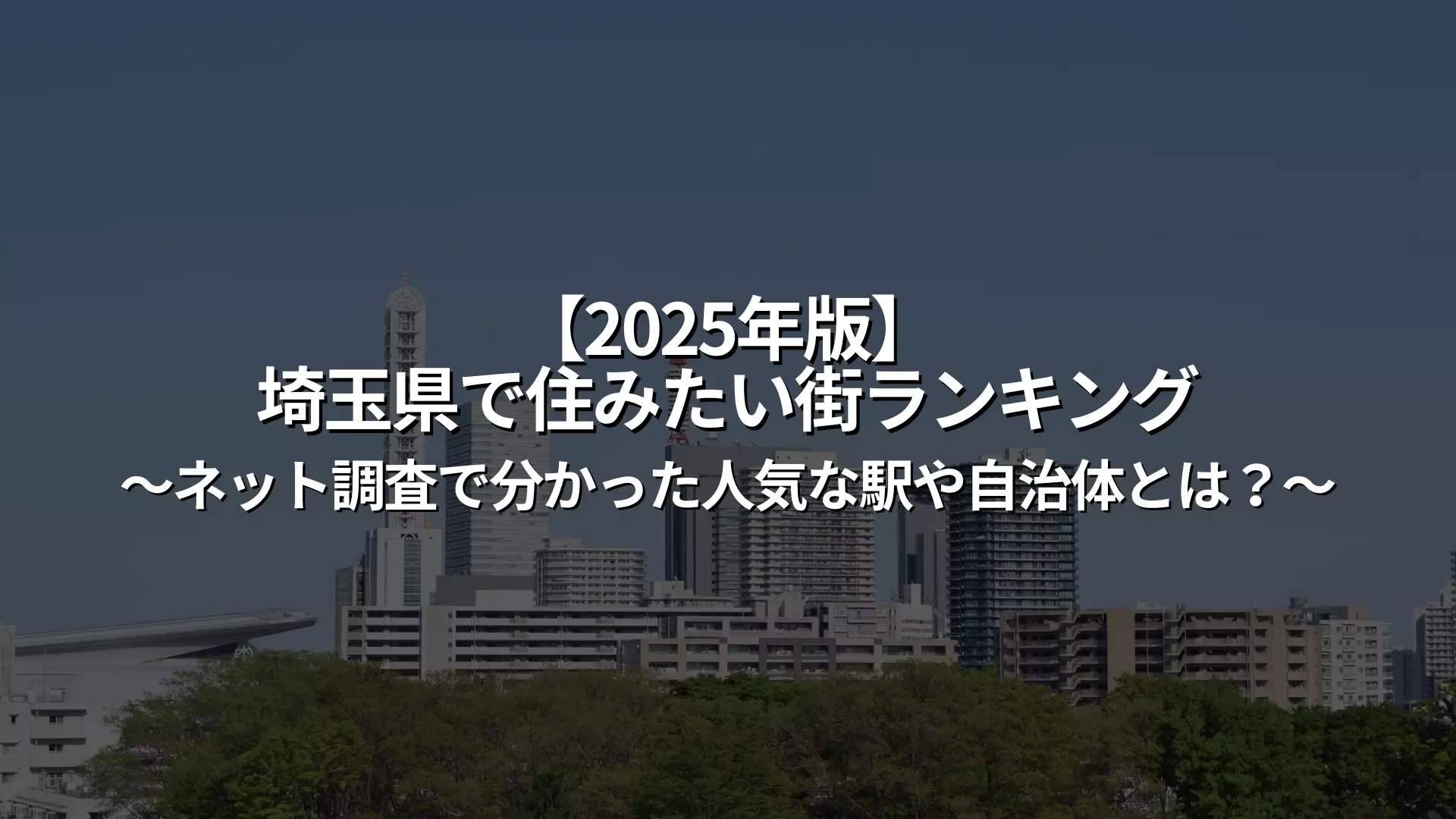Basic information about public safety in Kawasaki City
Kawasaki City, located in the eastern part of Kanagawa Prefecture, is a highly convenient city sandwiched between Tokyo and Yokohama. On the other hand, it is often seen as a city with poor security, but this is only true in certain areas.
Kawasaki City is made up of seven administrative districts, each with its own security situation. Petty crimes tend to be more prevalent around stations and in downtown areas, but residential areas and redeveloped areas are generally safer, with many areas popular with families and women living alone. Understanding the characteristics of each district is the first step to living safely.
Kawasaki City overall security trends
Kawasaki City as a whole has a tendency to have a high number of minor crimes, but violent and serious crimes are not particularly high compared to other cities. In particular, around Kawasaki Station and in the downtown area, minor crimes such as pickpocketing and bicycle thefts can be found here and there, but the security situation is stable in residential areas.
In addition, the city has been implementing safety measures such as installing security cameras and strengthening local patrols, and in recent years has been praised for its efforts to improve public safety. Overall, it can be said that the city's public safety varies greatly depending on where you live.
Crime numbers compared to the national average
The number of crimes in Kawasaki City per 100,000 people is slightly higher than the national average.
In particular, the majority of crimes are everyday crimes such as bicycle theft, shoplifting, and assault, and organized crime and serious crimes are relatively rare. According to statistics from the Kanagawa Prefectural Police, the crime rate in Kawasaki is lower than in Yokohama, and it is also safer than some areas in Tokyo.
It is important to not rely solely on numbers, but also to check occurrence trends and area characteristics in order to understand the actual public safety situation.
Why are there differences in public safety within the city?
The main reasons for the difference in public safety in Kawasaki City are:
- "Whether or not there is a downtown or industrial area"
- "Population density"
- This is due to several factors, including the "rate of foreign residents."
For example, Kawasaki Ward has a high rate of petty crime due to the presence of entertainment and red-light districts around the station, whereas residential areas such as Miyamae Ward and Tama Ward have a low crime rate and stable public safety.
In addition, in Nakahara Ward, where redevelopment is underway, the population is growing and the composition of residents is changing, and the security situation is also improving. Selecting a property after understanding these regional differences will lead to a safe and secure life.
Public safety information for each area, including Kawasaki Ward, Saiwai Ward, and Nakahara Ward
Kawasaki city has a wide range of public safety and living conditions depending on the area. Kawasaki, Saiwai, and Nakahara wards are particularly well-known for their high convenience, with stations and commercial facilities concentrated there, but the crime rates there are also quite different.
In addition, the inland areas of Takatsu, Miyamae, Tama, and Asao are characterized by their quiet residential areas and stable public safety. When moving or looking for a home, be sure to understand the characteristics of each ward and choose an area that suits your lifestyle and family composition.
This chapter explains the security information for each area.
Kawasaki Ward | A highly convenient area with a high crime rate
Kawasaki Ward is a highly convenient area with many commercial facilities, restaurants, and entertainment facilities centered around Kawasaki Station, but at the same time, it is also an area where you need to be careful about public safety. In particular, there have been many reports of minor crimes such as pickpocketing, snatching, and bicycle theft in the entertainment district around the station.
Some people also worry about the safety of the area at night due to the presence of red-light districts, but the environment is improving in residential areas and redeveloped areas away from the station, and safety is improving with the installation of crime prevention patrols and street lights.
Saiwai Ward | Safety in a popular area undergoing redevelopment
Saiwai-ku is a residential and business mixed area where redevelopment is progressing, including the west exit area of Kawasaki Station, Kashimada, and Shin-Kawasaki, and the public safety is relatively stable. The Shin-Kawasaki area in particular is popular with families, and is attracting attention as a relocation destination for families with children, as it has many parks and educational facilities.
Although there is heavy foot traffic in parts of the area in front of the station and minor incidents do occur, the local government and community have a high level of awareness of crime prevention and are proactive in taking measures to ensure public safety.
Nakahara Ward | Public safety in popular areas such as Musashi-Kosugi
Nakahara Ward is a rapidly growing area, especially in the Musashi-Kosugi area, where high-rise apartment buildings and large commercial facilities have been built due to redevelopment. With the influx of new residents, the area is generally considered to be safe, and it is attracting attention as a place where families and dual-income households can live in peace.
However, there are many people around the station, and there are occasional cases of bicycle theft and public manners. However, the local residents keep a watchful eye on the area and maintain a high level of crime prevention awareness.
What is the security situation like in Takatsu, Miyamae, Tama, and Asao wards?
Takatsu, Miyamae, Tama, and Asao wards, located in the inland area of Kawasaki City, tend to have generally stable public safety. These wards have developed as commuter towns, and are home to many families and elderly people, so the crime rate is relatively low.
Miyamae-ku and Asao-ku in particular are known as areas suitable for raising children, with lots of greenery and a good educational environment. There are also plenty of facilities necessary for daily life, making it an area where you can live safely and securely for a long time in a calm environment.
Search for a room
Only furnished properties with appliances are listed!
Reasons for concern about public safety in Kawasaki
Kawasaki City is an easy-to-live-in area with good access to the city center and undergoing redevelopment, but many people have the impression that it is a "bad neighborhood." This is due to a combination of factors, including past reports of crime, the existence of busy shopping districts around stations, and a high rate of foreign residents.
Although the actual security situation varies greatly from area to area, there are cases where the image of a certain area spreads to the whole. If you are considering Kawasaki as a place to live, it is important to understand this background and check the local atmosphere and data.
Here we will explain why people are concerned about the security situation.
Images from past incidents and reports
One of the main reasons why Kawasaki City is considered to have a poor public safety rating is the impact of serious incidents reported in the past.
For example, cases of assault, juvenile crime, and random attacks that occurred in Kawasaki Ward were widely reported on national news, leaving a negative impression on the entire area. Although these incidents were limited to certain areas, the impact of the reports spread the image of "Kawasaki = dangerous city."
It is important to note that this impression is different from the actual crime rate.
The existence of entertainment districts and red-light districts
The area around Kawasaki Station is home to a number of large commercial facilities, restaurants, and red-light districts, and is very busy at night. While the presence of these downtown areas brings great convenience, they also pose security risks, such as pickpockets, touts, and drunk people.
In particular, the Horinouchi area of Kawasaki Ward, where the red-light district is located, is an area where many people express concern about its public safety. However, in recent years, the environment has been gradually improving due to redevelopment and strengthening of security measures in the area.
What is the relationship with the foreign occupancy rate?
Kawasaki City has one of the highest rates of foreign residents in Japan, and is an area where many different nationalities and cultures coexist. However, differences in culture and language can cause problems in some areas, such as noise and other issues related to manners, and some people feel uneasy about public safety.
However, the high rate of foreign residents is not itself the direct cause of crime; the important factors are the maturity of the local acceptance system and community building. The local government is also strengthening its efforts in multicultural coexistence, so we can expect improvements in the future.
Areas recommended for single people and families with children
Kawasaki City has good access to central Tokyo and relatively low property and rent prices, so there are many areas that are popular with single people and families.
However, public safety and living conditions vary greatly from area to area, so it is important to choose a city that suits your lifestyle. For women living alone, key points include the state of development around stations with an emphasis on crime prevention and the number of people walking around at night, while for families, the level of support for child-rearing and the presence or absence of schools and parks are important.
Here we will introduce recommended areas with their own attractions.
A safe area suitable for women living alone
Areas that are safe, have people walking around even at night, and are highly convenient for living are recommended for women living alone.
Nakahara Ward's Motosumiyoshi and Musashi-Kosugi are areas where redevelopment is progressing, the whole town is bright, and security cameras and patrol systems are in place, making them safe environments to live in. Additionally, Saiwai Ward's Shin-Kawasaki and Takatsu Ward's Mizonokuchi also have supermarkets and drugstores around the stations, and are bustling even at night, so they are also highly rated in terms of crime prevention.
This area is close to the station, has a stable security situation, is convenient for commuting to work or school, and offers an ideal living environment for busy women.
A safe area popular with families
Areas with lots of greenery and good access to education, medical care, parks and other living infrastructure are popular among families with children.
In particular, Miyamae Ward and Asao Ward are characterized by their quiet residential areas, low crime rates, and high rates of family residence. Miyamae Ward's Saginuma and Asao Ward's Shin-Yurigaoka have high standards of education at elementary and junior high schools, and the local government has a comprehensive child-rearing support system.
Additionally, these areas have good commercial facilities and transport links around the stations, making them highly regarded as convenient for commuting to work or school and for families to live in.
Search for a room
Only furnished properties with appliances are listed!
Kawasaki City's Crime Prevention Measures and Government Initiatives
Kawasaki City is implementing a wide range of crime prevention measures in cooperation with the local community and the government, including the installation and subsidy system for security lights and cameras, neighborhood association patrols, and even crime prevention inspections of homes.
By having citizens take the initiative and working to create a safe environment throughout the community, we aim to create a town where families with children and women can live with peace of mind. In particular, by proactively implementing policies to support young people and for children and the elderly, we aim to raise awareness of crime prevention and foster a strong local community.

Crime prevention patrols and street lighting installation initiatives
In Kawasaki City, the city and neighborhood associations are working to convert security lights to LEDs and replace broken lights to create a safe nighttime environment. In Asao Ward and other areas, neighborhood associations are also running "Woof-Woof Patrols" and morning and evening watch activities, and the local network that supports security lights is functioning.
For example, Nakahara Ward has introduced blue rotating lights and has patrol teams made up of residents that regularly patrol the city, creating a crime prevention system in which the local community, police, and local government work together.
Crime prevention support for families with children
Kawasaki City places importance on the peace of mind of families with children, and provides support in both crime prevention and childcare. In addition to setting up local childcare support centers and providing medical assistance for young children, the city also provides free crime prevention diagnostics and checks the safety of homes.
In cooperation with local neighborhood associations and shopping districts, the city is working to ensure the safety of school routes and promote the establishment of "Child Emergency Rooms," establishing a system to support child-rearing through both crime prevention and childcare.
Young people and public safety awareness: The current situation in Kawasaki City and support measures
Kawasaki City formulated the "Second Phase Children and Youth Future Support Plan" in 2022, and is focusing on improving the environment for young people to grow, including preventing child abuse, poverty, and delinquency. This initiative aims to prevent public safety risks by linking educational facilities and local support projects and encouraging young people to participate in society.
Nakahara Ward and Miyamae Ward are also encouraging young people to take part in crime prevention awareness events and resident patrols, helping to strengthen crime prevention in the area.
Kawasaki's safety as seen from real voices and reviews from residents
The essence of the impression of public safety in Kawasaki City lies in the "voices of the residents," which cannot be seen from statistical data alone.
Online word-of-mouth and reviews on moving websites include both positive opinions such as "easy to live in" and "convenient" as well as concerns such as "the area around the station is noisy" and "it's scary to walk at night." The sense of safety varies greatly depending on the area, with many positive reviews for Musashi-Kosugi and Shin-Yurigaoka, but some people are a little wary of certain areas in Kawasaki Ward.
These genuine opinions from local residents can be an extremely useful source of information when choosing where to move.
Good and bad points I felt after actually living there
According to people who actually live in Kawasaki City,
- "Easy access to downtown Tokyo"
- The area has received many positive reviews, such as "There are many shopping facilities and it is easy to live here."
In particular, many people say that the redeveloped area of Musashi-Kosugi and the quiet residential areas of Miyamae-ku and Asao-ku are peaceful places to live.
on the other hand,
- "The area around Kawasaki Station is noisy at night and I'm concerned about safety."
- Some people say, "The Horinouchi area is close to the red-light district, so I feel uneasy traveling alone as a woman."
Differences in living conditions from area to area have a significant impact on the evaluation.
What is the resident satisfaction with public safety?
Looking at Kawasaki city as a whole, satisfaction with public safety can be summarized as "there are large differences depending on the area."
Surveys conducted on housing websites such as SUUMO also show high satisfaction in inland residential areas such as Nakahara Ward, Miyamae Ward, and Asao Ward, with many people saying that they "can walk safely even at night" and that "it is quiet and peaceful."
On the other hand, there have been complaints in some parts of Kawasaki Ward, such as "noise is a concern" and "there are a lot of bicycle thefts." Understanding the public safety situation in each area by referring to these actual voices is the key to choosing a livable area.
Search for a room
Only furnished properties with appliances are listed!
Advice for those concerned about safety in Kawasaki
Kawasaki City is a city with great convenience and potential for development, but because security conditions vary from area to area, you need to be careful when choosing where to live. It is especially important for people living alone or with children to choose an environment where they can live safely.
In this chapter, we will introduce specific checkpoints to assess the public safety of an area when searching for a property, and how to check the area on-site. A comprehensive assessment of the area's atmosphere, crime rate, station area, pedestrian traffic at night, and the presence or absence of security equipment will lead to a safe life.
Points to consider when looking for a property
To determine whether an area is safe or not, it is effective to use crime maps and regional data released by the police. Other points to check include whether there are enough security cameras and street lights around the property, the distance to the nearest station, and the number of people passing by. The frequency of local government security patrols, word of mouth from local residents, and the presence or absence of schools and parks are also factors in determining the ease of living in an area.
We also recommend using Google Maps Street View to check out the atmosphere of the city in advance. Judge the area based on both numbers and impressions.
How to check out the atmosphere at night and around stations
When choosing a property, be sure to check the "nightlife atmosphere."
Since the impression of public safety changes greatly between daytime and night, it is effective to walk from the station to the property after sunset. It is important to actually feel whether there are any alleys with little traffic or poorly lit areas along the way, and whether you are bothered by the noise from restaurants or downtown areas.
In addition, the opening hours of convenience stores and drugstores around the station, the number of security cameras, etc. also affect your sense of security at night. If possible, visit the area on multiple days and at multiple times to get a comprehensive assessment of the security situation.
Summary | It is not possible to say that the public safety in Kawasaki is generally bad
The image of Kawasaki City as a "bad neighborhood" comes from some reports and limited areas, but if you look at the city as a whole, there are many safe and livable areas.
In particular, areas such as Nakahara Ward and Saiwai Ward, which are undergoing redevelopment, and Miyamae Ward and Asao Ward, which are home to quiet residential areas, have good public safety and are ideal environments for families and women living alone.
On the other hand, there are some areas where you need to be careful, such as downtown areas in front of stations, but the government and residents are becoming more aware of crime prevention, and improvements are being made. The actual security situation varies greatly from area to area, so be sure to gather information and check the situation on-site to choose a city that suits your lifestyle.
The level of safety varies from area to area
As mentioned at the beginning, Kawasaki City has seven administrative wards, each with its own characteristics.
For example, while there are many reports of minor crimes around stations in Kawasaki Ward, residential areas such as Asao Ward and Miyamae Ward have stable public safety, and people feel safe walking alone at night. Even within the same city of Kawasaki, the perceived public safety can vary greatly depending on the distance from the station, the presence or absence of streetlights, and the activity of local self-government activities.
Therefore, rather than generalizing and saying "Kawasaki City = bad security," it is important to understand the characteristics of each area and determine what kind of environment is comfortable and safe for you.
It is important to choose between ease of living and convenience.
When choosing a place to live, the balance between "convenience" and "safety" is more important than anything else. Kawasaki City has many areas with excellent access to the city center and shopping environments, but areas that are close to stations and have high convenience may have some concerns about safety. Conversely, areas with good safety may be far from stations or have slightly poor transportation access.
The important thing is to clearly define the priorities that suit you and your family's lifestyle. The area you should choose will vary greatly depending on whether you prioritize convenience for commuting to work or school, or a safe environment for raising children.

